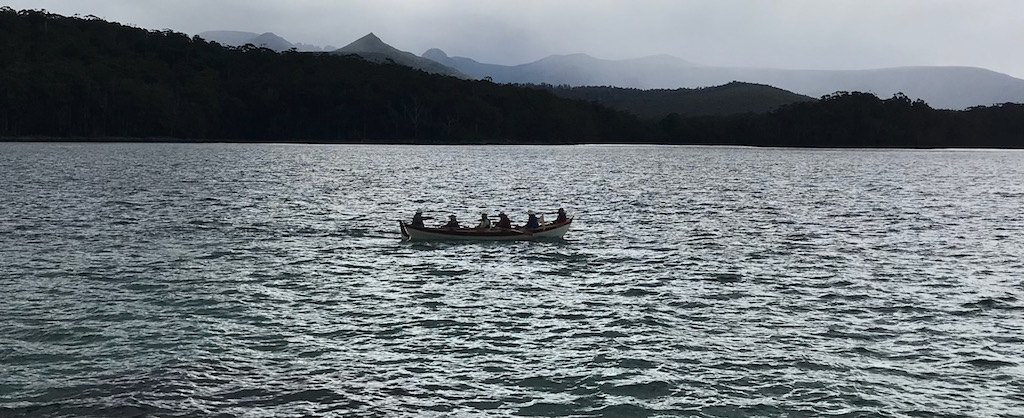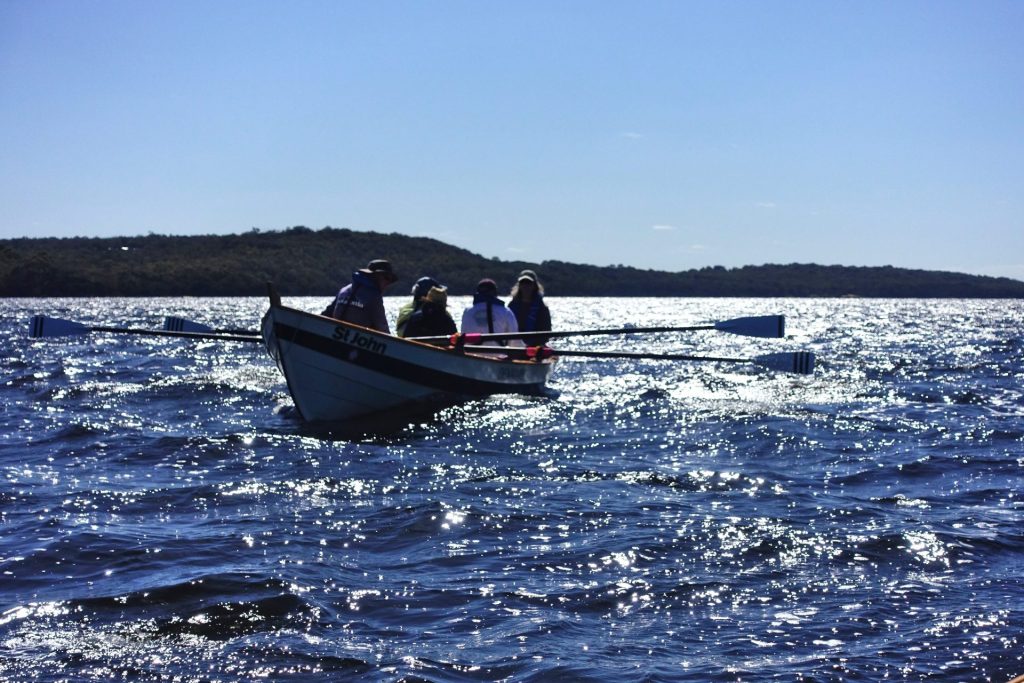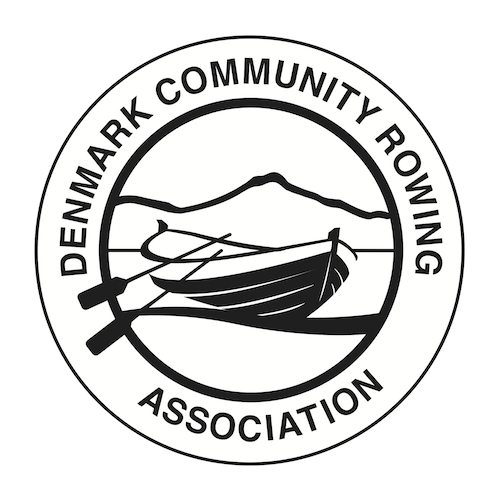

The St Ayles skiff is a modern adaptation of the traditional Scottish Fair Isle skiff. In 2009 the Scottish Fisheries Museum in Anstruther approached boat kit manufacturer Alec Jordan to build a boat for the museum. Jordon thought it would be a good idea to revive coastal rowing regattas that had taken place in the coal mining villages on the east coast of Scotland in the 1950’s. The Museum commissioned Australian ex-pat Iain Oughtred, to design a skiff for amateur construction. His design named the St Ayles Skiff, is built to a standard International one design from the kit consisting of laser cut marine ply components, epoxy glue and locally sourced timber for thwarts, gunwales, knees and oars.
These stable and seaworthy boats can be rowed by people of all ages and all levels of fitness. Over 300 St Ayles skiffs have been built by communities all over the world with the first built in Australia by Tasmania’s “Women on Water” at Franklin, Tasmania in 2012.

The Denmark boats have joined a growing fleet in Western Australia. Nine skiffs have already been built, six in Perth and two in Augusta one in Nannup and our two. It is hoped Albany will be the next to build two. 29 boats have been built by communities across Australia with new builds commencing in Queensland.
The St Ayles Skiffs are likely to be used in three ways (in order of popularity):
- Social Rowing – Regular rowing for exercise and fun. Joining in with community events, festivals and regattas.
- Competitive Rowing – Training, attending competitions and virtual global competitions using GPS devices.
- Exploration Rowing, Raids – Discovering new waterways, joining long distance raids, camping.


Building a St Ayles Skiff

St Ayles Skiffs are designed to be built by amateurs with a modicum of handyman skills and knowledge. Denmark Rowers was fortunate to have a few experienced wooden boat builders and repairers on the committee who steered the project and produced fine looking craft.
There are plans, instructions and flow diagrams as well as countless Youtube videos that demonstrate the build process.
The hull is built on a frame and moulds upside down to begin with and then turned over for fitting out with seats, gunwales and other fittings before being sanded and painted.

There are other components like the oars and the rudder to build from wood but very few other extras except perhaps a mast and sail.
Building our St Ayles Skiffs began in February 2022 when we set up the building moulds we had collected from Nanup Men’s Shed. The CNC plywood kits and keel timbers had made it across from Stray Dog Boat Works in South Australia, despite Covid and floods causing delays, and had been delivered to Thorntons Mitre 10 by Denmark Haulage (thanks guys). The progress of the project was documented in the Building Blog. By Day 40, in mid May, we had reached the milestone of our first Turnover Day. We had a steady group of around 15 of the members who have worked on the boats, varying from 3 to 8 on any given day. We enjoyed the process and the sharing of skills and the fantastic hospitality of Harry and Kay who’s shed we were in. We also had help from the Year 11 students of Denmark Senior High School who are doing their own boatbuilding course and restoring a traditionally built boat.
A summary of Denmark’s build timeline and costs can be found here.
One piece of advice we got from Augusta before we started really paid dividends and that is, if you are going to build two skiffs build them in parallel. When the first skiff comes off the mould start the second one. The momentum is carried through the project whereas starting a second build after completion of the first is anticlimactic. Of course you need the luxury of a large shed for this to be possible.
We welcome enquiries and are keen to help anyone thinking of building St Ayles Skiffs just contact Dave Cliff at denmarkrowers@iinet.net.au or for a blow by blow on how we did it visit our Building Blog
